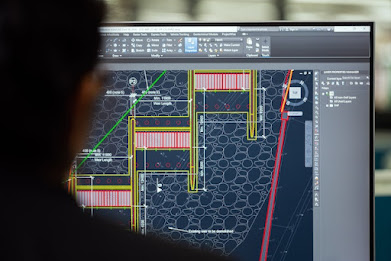Become a Full Stack Software Engineer step-by-step guide 2023
Introduction
Becoming a full-stack software engineer is a promising career choice in today's rapidly evolving tech industry. Full-stack developers possess a comprehensive skill set that allows them to work on both the front-end and back-end components of a software application. In this step-by-step guide, we will outline the key milestones and learning paths to help you become a proficient full-stack software engineer.

Learn the basics of computer science, including data structures, algorithms, and programming concepts.
Keep learning and stay up to date with the latest technologies and industry trends.
Consider earning a degree or certification in computer science or a related field, or gaining relevant work experience through internships or entry-level positions.
Step 1: Familiarize Yourself with Front-End Development
Learn HTML, CSS, and JavaScript for front-end development.
Front-end development involves creating the user interface and implementing the visual elements of a software application. Start by learning HTML, CSS, and JavaScript, the foundational languages of front-end development. These languages enable you to create interactive web pages and user-friendly interfaces.
Step 2: Master a Front-End Framework
To enhance your front-end development skills, it's crucial to learn a popular front-end framework such as React, Angular, or Vue.js. These frameworks provide powerful tools and libraries that simplify the development process and make your code more efficient and maintainable.
Step 3: Dive into Back-End Development
Familiarize yourself with one or more programming languages commonly used in full-stack development, such as JavaScript, Python, and Ruby.
Back-end development involves server-side programming, database management, and handling server requests. Learn a back-end programming language such as Python, Java, or Node.js. Gain a solid understanding of concepts like REST APIs, server-side frameworks, and data management.
Learn a framework or library for front-end development, such as React or Angular.
Step 4: Explore Databases and Data Persistence
Learn a database management system, such as MySQL or MongoDB.
Database management is a vital aspect of full-stack development. Familiarize yourself with popular databases like MySQL, PostgreSQL, or MongoDB. Learn how to design and interact with databases efficiently, including querying, indexing, and data modeling.
Step 5: Learn Server-Side Frameworks
Learn a back-end programming language and framework, such as Node.js and Express for JavaScript, or Ruby on Rails for Ruby.
Server-side frameworks simplify the development process and help you build robust and scalable applications. Explore frameworks such as Django (Python), Spring (Java), or Express.js (Node.js). Understanding these frameworks will enable you to handle complex back-end logic and create efficient server-side code.
Step 6: Gain Knowledge in DevOps and Deployment
DevOps practices are essential for modern software development. Learn about version control systems (e.g., Git), automated testing, continuous integration, and deployment pipelines. Familiarize yourself with cloud platforms like AWS, Azure, or Google Cloud for hosting and deploying your applications.
Step 7: Expand Your Skill Set
To thrive as a full-stack software engineer, continuously expand your knowledge. Stay up-to-date with the latest technologies, frameworks, and programming languages. Explore concepts such as containerization (Docker), microservices, and serverless architecture.
Step 8: Build Projects and Collaborate
Learn how to use Git and GitHub for version control.
Apply your skills by building real-world projects. Start with small applications and gradually work on more complex projects. Collaborate with other developers to gain experience working in a team, utilizing version control systems, and following industry best practices.
Practice building full-stack web applications by working on personal projects and contributing to open-source projects.
Step 9: Continuous Learning and Professional Development
Software development is a constantly evolving field, so embrace a mindset of continuous learning. Participate in online communities, attend workshops, join coding boot camps, or pursue a computer science degree to further enhance your skills and knowledge.
Conclusion
Becoming a full-stack software engineer requires dedication, perseverance, and a passion for problem-solving. By following this step-by-step guide, you can acquire the necessary skills and knowledge to embark on an exciting journey in the world of full-stack development. Remember to keep learning, stay curious, and embrace the ever-changing landscape of technology to excel in this rewarding career.
Also, Read this Article :



